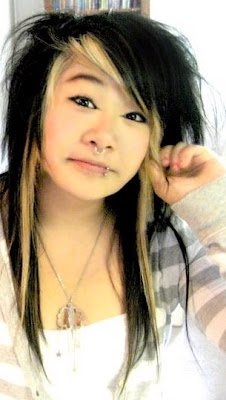Tattoos and body piercings have grown in popularity over the past few decades. Once only reserved for tribes, sailors, or criminals, the meaning of tattoos and the reasons for people getting them have changed dramatically.
A Brief History
Like body piercings, tattoos are created by the constant application of ink just under the subcutaneous layer of the skin with a needle. At first, many tribes, sailors, and other groups used to apply the ink by hand. This was a long, painful process and the marked people were usually of high status. The tattoos were often a sign of respect, rank, and social status. Since the tattoos are permanent, the owners were guaranteed respect for life.
The interest of tattooing for the general public spread throughout the world in fads. A sailor would bring over a fully tattooed indigenous person and interest would spread like wildfire. In London, a sailor brought over a tattooed Polynesian from the South Pacific, and many of the people of London began to acquire their own small tattoos in secret places. However, interest in tattooing waxed and waned due to its long, arduous process of applying every dot of ink by hand.

The electric tattoo machine is a relatively recent invention, created in 1891 by Samuel O'Reily, and has revolutionized tattoos into an art form. Tattooing can still be long and painful but now the many punctures in the skin are done automatically at thousands of punctures per minute and can allow for better detail and shading. Skin is the most unique canvas and a tattoo that is placed onto the skin is permanent, requiring extra consideration for the right tattoo, the right artist, and the right placement. That piece of art will follow throughout one's lifetime.
In New York City, Samuel O'Reily trained a partner named Charley Wagner, who continued teaching after O'Reily's death. For a brief while, Chatham Square flourished with tattoo artists while the rest of the world remained unimpressed with tattooing. For a long time tattooing was generally stigmatized and most people with tattoos were stereotyped to be scary, dangerous, or freaks. During the 1920s tattoos began to be recognized for where a person has been in their travels, as tattoo artists set up shops in Coney Island. An outbreak of hepatitis, blood poisoning and other disease even worsened the prospects for tattooing in American culture.
Finally, a tattoo artist named Lyle Tuttle changed America's perception of tattooing by introducing celebrities to the art form. He tattooed them, mostly women, and used the media to change their stereotypes about the types of people who got tattoos. Together with the heightened awareness of the importance of sterilization and the improvement of training, tattoo popularity began to surge in the last few decades.
Changing Views
Today, the tattooing industry booms with new talented artists, schools and apprenticeship for budding tattooists, enlightened knowledge about sterilization, and health code regulation. Tattoo suppliers are well known and there are a wide variety of brands to choose from inks, tattoo machines, needles, and even tattoo shop supplies such as flash designs, chairs, and more. Younger generations are catching onto this art form and have made having a tattoo almost a rite of passage when one turns 18 in America. As more and more people of all walks of life have tattoos, the old stereotypes of tattooing that previously kept tattooing underground and unsafe has become outdated.

Now getting a tattoo is easier, mildly less painful, and relatively faster than ever before. The results of sitting in a chair in one position for a few hours are much more satisfying to see a beautiful piece of art with the outbursts of new and unique tattoo artists, each with their own style. Some tattoo designers stick with what is known as Old School tattoos, which have the look of tattoos done before the Second World War. They include traditional designs like nautical stars, pin up girls and mermaids, Old English letters, sparrows, skulls, hearts, roses, symbolic animal spirits (tigers, eagles, fish), and more. Old School tattoos keep the look simple with mostly black ink and a little bit of color because in the older days of tattooing there was not a great variety of ink colors to choose from. Old school tattoos are also notorious for featuring a ribbon with Old English letters writing a word or name inside the papyrus. The infamous Sailor Jerry Collins was the man who designed most tattoos that are now considered traditional or Old School. Today many women interested in 1950s retro fashion choose Old School tattoos and place them on their arm like a sailor would back in the day. Many sailor tattoos are symbolic. For example, the nautical star means that a person has gone through an important event or has been somewhere far and has returned safely.

New School tattoos include any new techniques done after this war. After the 1961 hepatitis outbreak which forced the tattoo movement underground for a while, tattoo designs were picked up by younger generations. They used bold, bright colors and utilized more shading thanks to advancements in needle variety and better quality ink. The health code regulations and better use of sterilization machines brought tattooing back in the forefront again. New school tattoos still have the same list of tattoo designs as old school but are captured in a unique way that is difficult to explain but easy to see the difference. Also many people today get new school designs that are custom made, compared to the old school tattoos which were generally picked off a wall of flash.
Today there are dozens of interesting tattoo styles to choose from: Celtic, Japanese, religious, spiritual, tribal, bio-mechanical, feminine, military, black and gray, traditional, neo-traditional, modern, and more. The best part about getting a tattoo is designing a custom piece. Then it is completely unique and meaningful for the person. Today, tattooing is more than ink on skin; it is expression of the soul.


















































